Smiling Boot Prints in the Snow
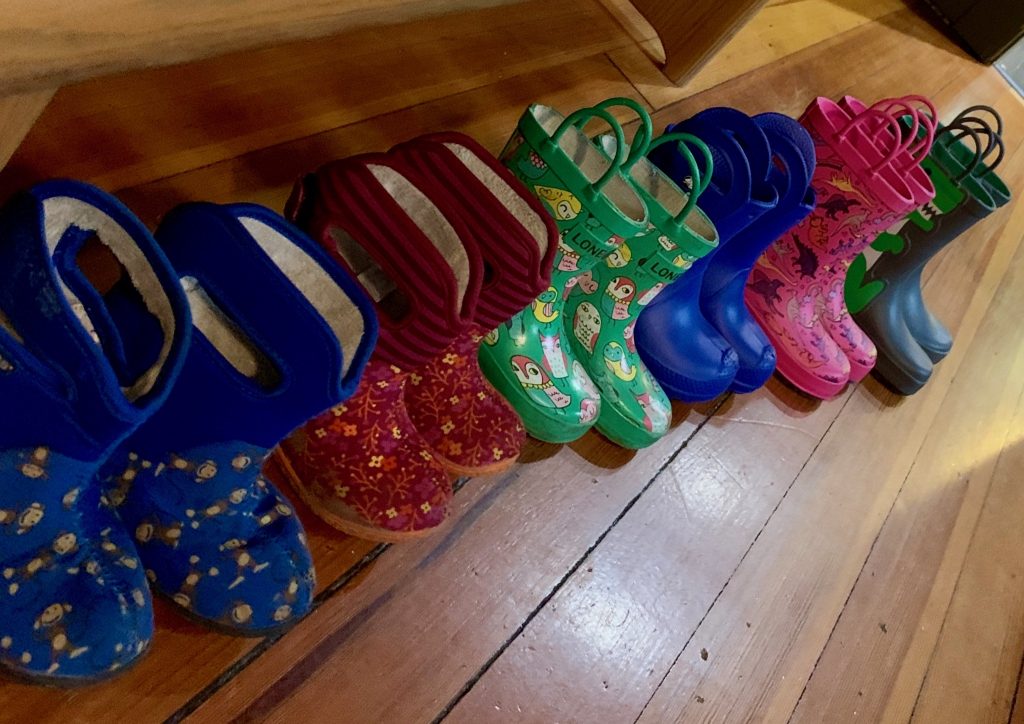
Today is one of those magical winter mornings when snow blankets the ground and clings to the trees around our center. The sun is shining and the world looks so sparkly and irresistible that we head outside in spite of the freezing temperatures.
“Hey! Who has the smiling boot?” Jacoby calls out to the group. He scans the play space, which looks like a snowy white canvas dotted with boot prints.
“Do you have the smiling boot?” he asks Maria.
Maria looks confused as she glances down at her boots. “No, my boots are pink.”
“No, no…on the bottom!” Jacob points to her boots. “Does your boot have a smiling face on the bottom?”
Even I am confused by Jacoby’s question—until he points to the clue in the snow.
“Look!” he declares. “Somebody has a smiley face on the bottom of their boot.”
Ah-hah! Indeed, we do have a smiley face boot print staring up at us from the snow-covered ground. Well, this will warm us all up! Let the STEM investigation begin!
After a fresh snowfall, it’s so much fun to find and follow animal tracks. But we’ve never really paid attention to the patterns on the soles of our boots until now.
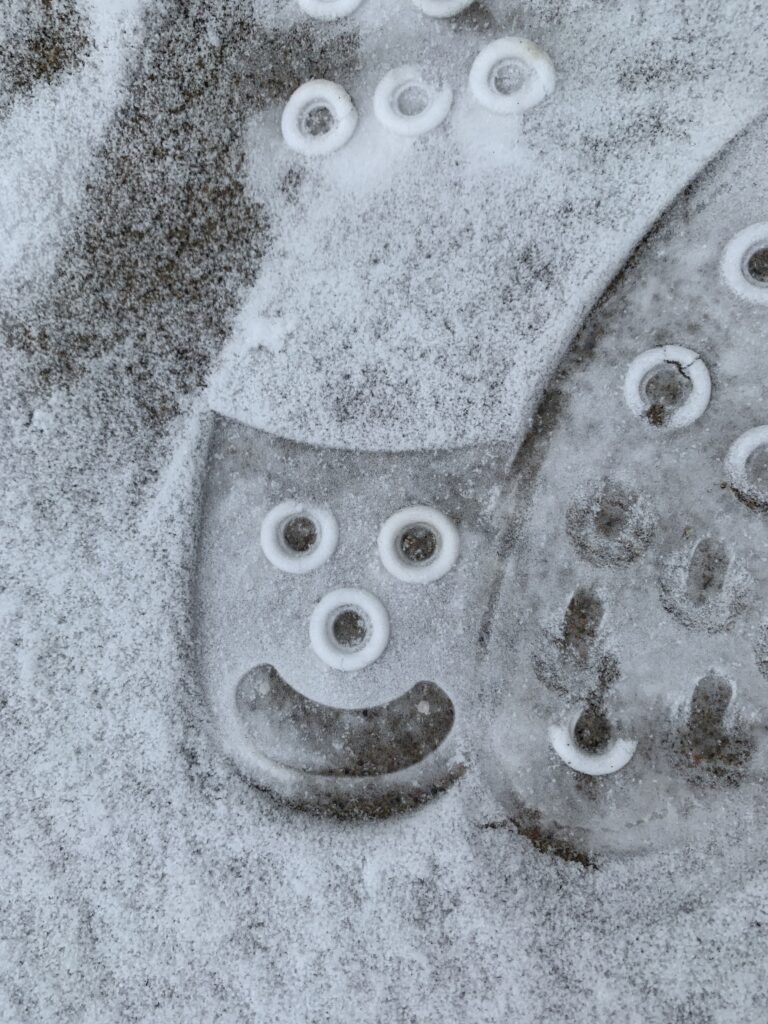
One by one, Maria and Jacoby begin to check the bottom of each friend’s boot. This simple moment of exploring patterns leads us to measurement, reasoning and comparing attributes.
Young children instinctively seem to notice attributes. It may be the shape, size, color, length or some other characteristics of an object, such as today’s smiling boot face.
Children develop their understanding of matching and patterns through experience. Because it’s difficult to consider a lot of attributes at once, children often begin creating sets by finding exact matches.
When children create pairs of boots or find an exact match to the smiling boot face, they are creating sets of items that are exactly alike. Maria and Jacoby are using rudimentary math, science and engineering skills as they observe and ask questions—all while solving the smiling boot print mystery!
Suddenly, everyone is stomping their boots and comparing and analyzing the shapes and patterns that their boots are leaving in the snow.
“I have zigzags!” announces Liam.
Sure enough, as we all run over to look at Liam’s boot print in the snow, we see row after row of zigzags.
“They look like mountains!” laughs Rokia. “That’s so cool!”
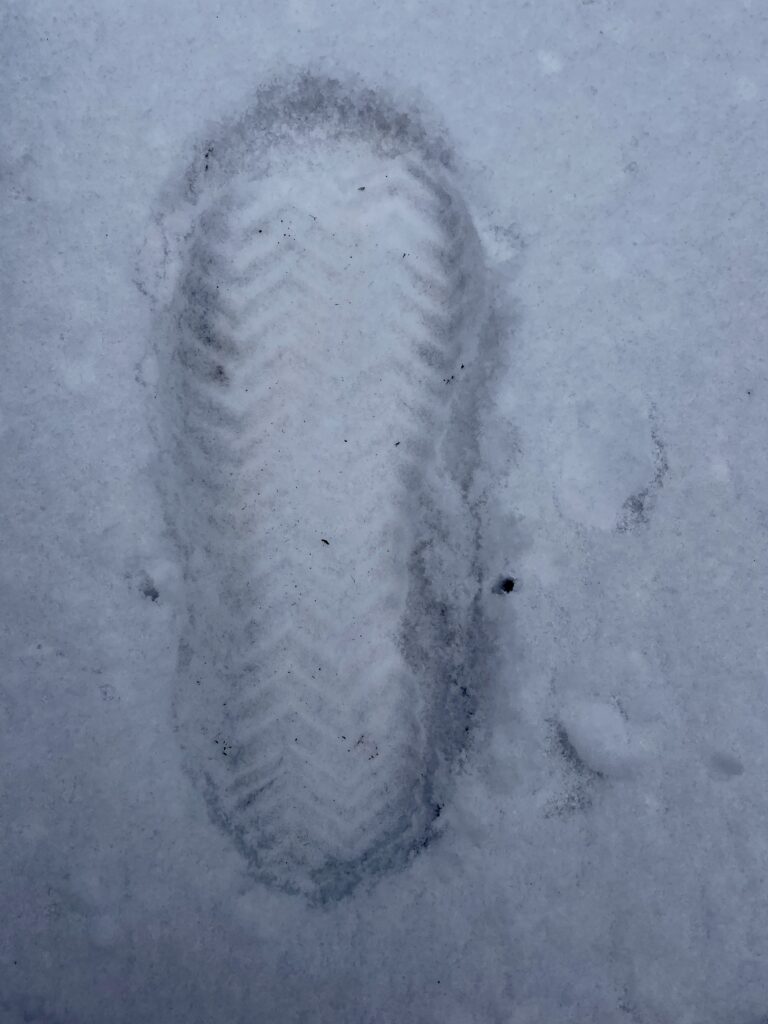
“I have rectangles!” announces Rachel. “If I turn around, it looks like a house with a roof. Look! See, at the bottom of my boot print?”
Our focus is now very intentional and the mood has shifted from playful curiosity to deep observation and concentration.
This is what child-led learning looks like. For those of you who believe that “child-led learning” can only lead to chaos, I urge you to put on your winter wear, head outside and see how effective and wondrous it can truly be.
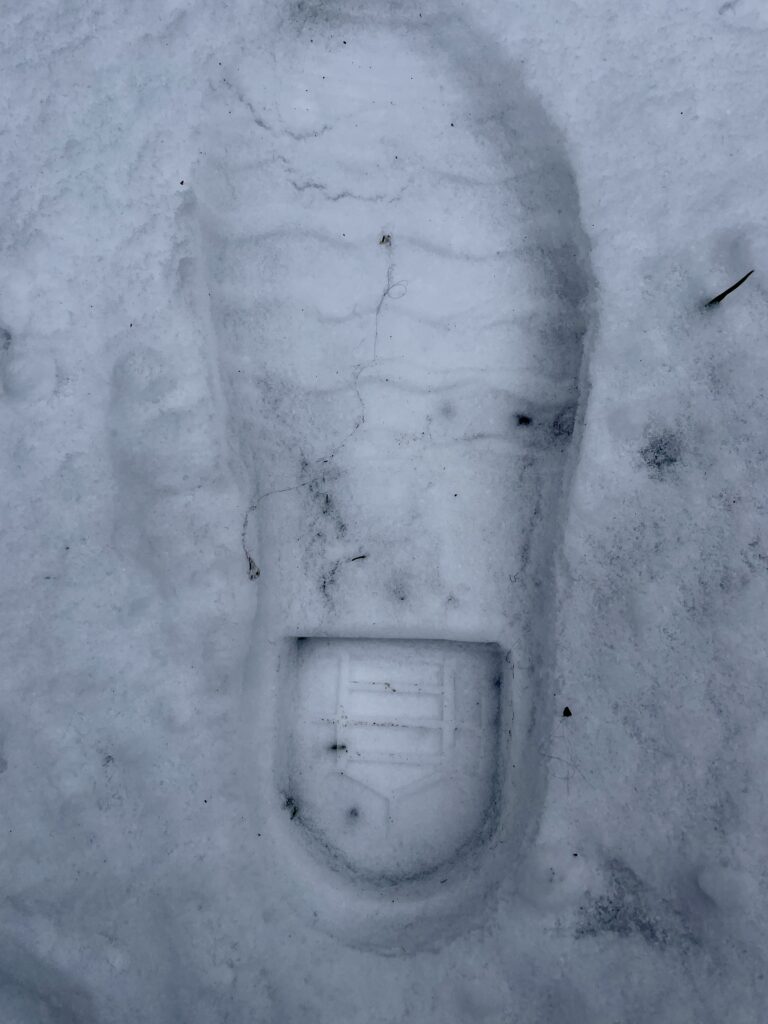
“I have diamonds!” shouts Julio, “Oh and triangles at the top and bottom. Wow! Look at my boot print, it has really cool patterns.”
We are working on spatial reasoning, direction and positional vocabulary. This is the deep learning that takes place when children have ample time to explore and investigate.
Every day, children learn something new. Every day, they deepen their understanding of STEM principles and share their insights and theories with their fellow STEM explorers.
Time is the key to deep learning!

“I have snakes!” Josie shouts.
“Snakes?”
Everyone comes running to see the newly discovered boot-print pattern. And, yes indeed, Josie’s boot print really does look like snakes.
But Isaac sees it differently. “I think it looks like waves,” he counters. “You know, like when you throw a rock in the river and it makes those lines?”
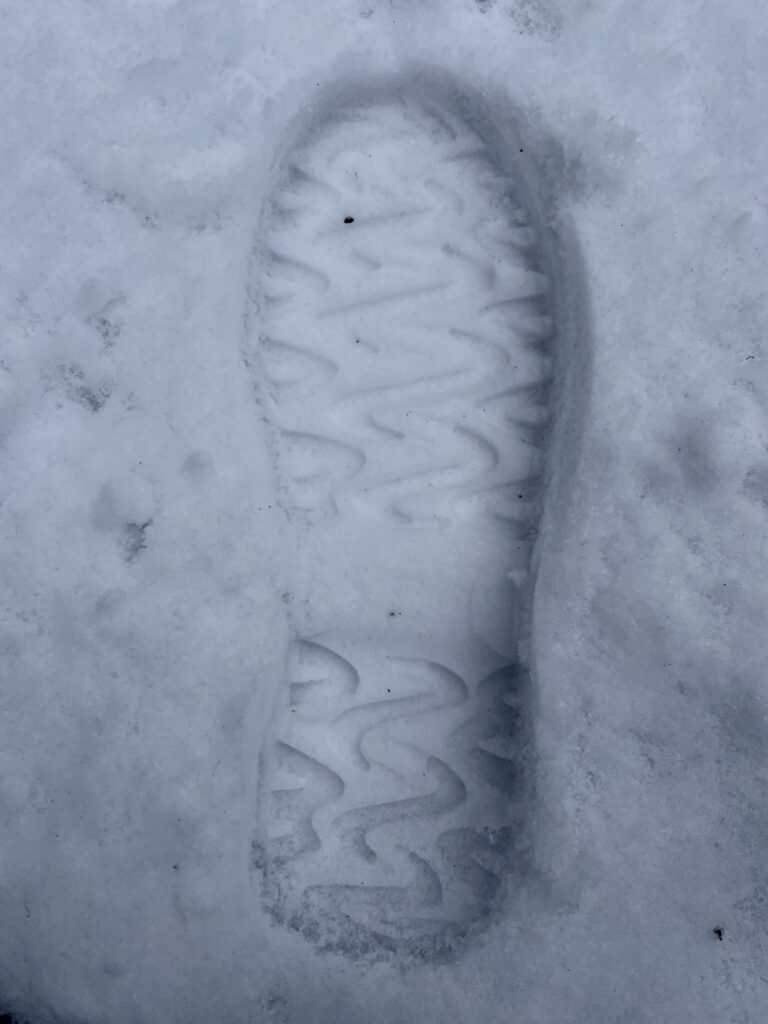
Then five-year-old Maya reorients the group to the smiley-face boot prints that started the morning’s STEM investigation.
“Where did that smiley face boot come from?” she asks, putting an end to the snake-shape and wave-shape discussion.
“I don’t know!” retorts a frustrated Jacoby. “That’s what I am trying to figure out!”
“No, I mean, where did the smiley face boot print start?” Maya clarifies, assuming the role of lead investigator. “Where did you find it? Did you follow it, like we followed the cat paw prints last winter?”
Jacoby pauses and I can see the wheels turning as he considers Maya’s questions. This is a lightbulb moment when the children suddenly recall a forgotten game from winters past. We have plenty of wandering cats in our neighborhood. For years, we have engaged in follow-the-cat-print expeditions on snowy days, following the tracks and trying to figure out the exact route that the cat took and why. Today has ushered in a new season of snow—and now we are rediscovering the game all over again.
Five-year-old Maya has had a few more years of brain development and a few more years of winter play, so she has retained more memories of those snowy-day games than the younger children who started the smiling boot print investigation.
Suddenly we are tracking movement, direction and the changes in how the boot print is left. We don’t have paper and pencils to collect data outside today, but our friends are forming hypotheses and making deductions as they piece the clues together and abandon the ideas that don’t pan out.
Maya continues as the lead investigator. “Look at the size of this boot track. It’s much bigger than our boots. See? I think it’s an adult boot print. Look how far it is between the foot prints. It takes me three steps to their two steps.”
“Maybe it’s the mail carrier,” suggests Lois. “She brought a package to the door yesterday.”
“It can’t be the mail carrier,” reasons Maya. “She doesn’t walk on this side of the center.”
“It must be a parent!” shouts Jacoby. “Who has a parent with a smiling boot?”
The question is met with dead silence. No one knows the answer.
Suddenly, Maya turns to me and asks, “Do you have a smiling boot? You are an adult.”
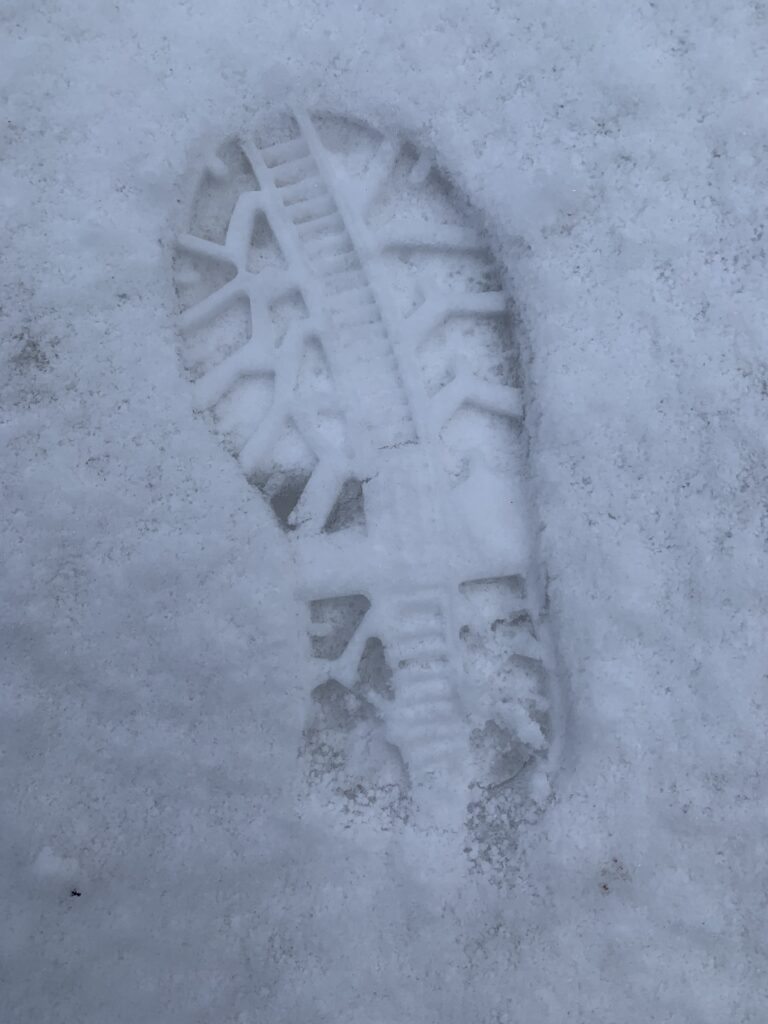
Much to my disappointment and the chagrin of my young friends, I am not the owner of the smiling boot. We are getting cold and our investigation has hit a dead end. We decide to go indoors and warm up with some hot cocoa and banana muffins.
At pickup time, the children check the boots of every parent for a smiling face, but no one has the matching boot. Many weeks later, we discover that the smiling boot belongs to a grandparent of one of the children at our center. By then the thrill of the hunt is over. But the learning has not been lost. A great morning of STEM investigation is tucked away safely in the developing brains of our early math explorers.
Ready to start your own Snowy Day STEM Investigation? Check out Show Me Your Shoe, an Early Math Counts lesson plan that can be adapted for your own boot-matching investigation!
Great idea
Interesting all the knowledge that is produced.
Such a fun way to explore their environment while discovering and describing the shapes they notice!
How cool and fun! Kids are so smart!
Such a creative way to incorporate shape, size and direction into an everyday activity.
Amazing how the children changed the direction of the learning goals.
from a single boot print so much was observed , investigated, explored and learned. we had similar experience while using animals with our playdough one day, matters and disccoveries were made with animals footprints.
child inspired and led activities are such an incredible thing to be a part of could also do in summer with barefeet and water
Oh, I love that idea! I can’t wait to try it! Thanks for inspiring more fun outdoors!
The children get to use their imagination while examining the boot prints.
Awesome learning experience.